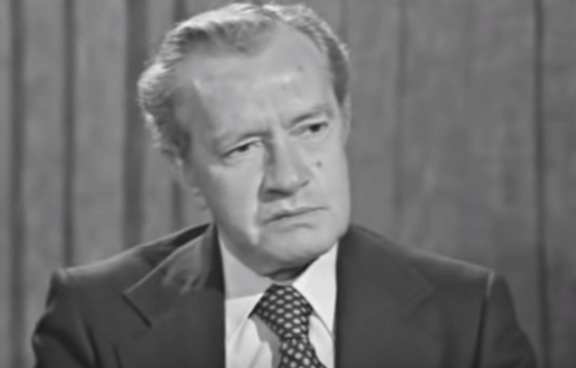Juan Rulfo was a poignant writer who gave universal voice to Mexican peasants. Although he did not win the Nobel Prize in Literature, he left two great works, the novel?Pedro Peramo? And the storybook “The Burning Plain. “
His real name was Juan Nepomuceno Carlos Pérez Rulfo Vizcaíno. It is not known exactly where he was born and several localities are considered: Sayula, as it appears on his birth certificate; Apulco, where his mother’s property was located; or San Gabriel, the city that marked your heart. What these places have in common, besides being in Jalisco, are the scars of the Mexican Revolution and the Christian War.
- “And I opened my mouth to let go (my soul).
- And she’s gone.
- Did I feel the blood breath with which it was tied to my heart fall into my hands?Pedro Peramo.
- Juan Rulfo?.
An act of violence marked the childhood of this fabulous writer, who was born on May 16, 1917 and witnessed the great social uproes of the 1920s in Mexico, at the age of 6 his father was murdered, his mother severely affected. and died four years later. This caused John Rulfo’s childhood to sink into an emotional divide and found solace only in art.
Juan Rulfo’s education was unstable, he had to change schools several times for various reasons, after his mother’s death in 1927, he entered the Luis Silva School in Guadalajara, in his uncle’s bee, staying there until the age of 15. .
One of his teachers, Father Irineo Monroy, unconsciously left him with a certain legacy: the books. This priest had been an ecclesiastical censor, touring the houses to examine the publications to determine whether it was lawful to read them or not. considered forbidden and thus created a vast library.
After his death he left all his books in the house where Juan Rulfo lived, from that moment on the reading will become Rulfo’s great pastime. To be shot. ” Thus he grew and formed: between the books of Alejandro Dumas, Victor Hugo and any work that fell into his hands.
In fact, Rulfo was not an author who liked to talk about his life, sometimes he would get me into ambiguities or give uncertain data, for a long time claimed to have been born in 1918, but according to the most reliable documents, he was born in 1917. It is true that he changed his date of birth to approach chronologically the young authors and the “literary boom” that lived on the continent.
Juan Rulfo belongs to the group of writers who never graduated from college; he was a self-taught author. He tried to start his studies at the University of Guadalajara, but a long strike prevented him. He wanted to revalidate his college degrees, but he was prevented from doing so. Then, in 1934, he decided not to enter university life, opting for a new path. From that moment on, his traveler’s soul takes hold of him.
In 1937 he began working as a file classifier in the government secretariat of Guadalajara, at which time he also struck up a decisive friendship with Efrén Hernández, the first person to believe in his writings and encouraged him to make them public. he became a migrant agent and met the writer Juan José Arreola, who had a strong influence on him.
By now he had developed the other passions that have always accompanied him: photography, history and anthropology. Juan Rulfo, who was later made known through great works, was already formed.
In 1948, Juan Rulfo married Clara Aparocio, with whom he had several children, gradually his fame as a writer and intellectual was growing and received several scholarships from the Writers’ Center of Mexico, which allowed him to devote himself entirely to writing.
In 1953, he published the plain on fire? And in 1955, “Pedro Peramo”. The latter is considered one of the great novels of universal literature.
These two great works have given Juan Rulfo a national and international reputation, at that time the most recognized writer from all over Mexico, has received praise from great writers such as Jorge Lus Borges, Susan Sontag, Gabriel Garca Marquez and many more. Other.
The last twenty years of his life he dedicated them to the National Indigenous Institute of Mexico, where he published one of the most important collections of anthropology, made several photographic exhibitions and published new literary works in the 1980s.
Rulfo was one of the first authors to successfully integrate popular and local language into his novels without the need to include a glossary, that is, without the need for a manual that would allow its decoding, the text itself was already used to interpret. understand the most popular aspects of your language. In Latin America, there is a growing trend towards regionalism and local culture.
Rulfo scored before and after. Without his work we could not understand the later literature, the world of Rulfo is not so much regionalist as rural, which has made him a mythical author who has been referenced and praised by countless authors.
The legend of Rulfo was built as a kind of myth; marks a kind of ironic distance between the reader and him. This legend was reinforced by his silence. Rulfo stopped publishing from 1955, but the reasons are uncertain, some researchers wanted to see little anxiety in them, but they also did not clarify the reasons, the paradox of this author is that, as his reputation as a writer increased, his production diminished. .
His fame earned him as one of Mexico’s most recognized authors and the awards were immediate. In 1983 he was awarded the Prince of Asturias Prize, although he died a few years later, in 1986.
It is not easy to describe in words what John Rulfo’s work does, suffice it to say that it does not look like anything known and, at the same time, is familiar to everything.

